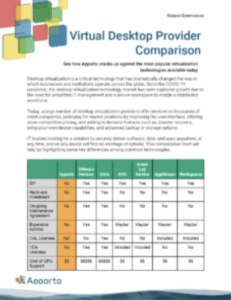Optimizing IT Governance: Strategies for Balancing Centralization and Decentralization in Higher Education
As universities continue to embrace technology, the need for effective IT governance frameworks becomes increasingly evident. However, with the complexity of higher education institutions, finding the right balance between centralization and decentralization can be challenging. In this article, we will explore strategies for optimizing IT governance in higher education by balancing centralization and decentralization.
Understanding IT Governance in Higher Education
IT governance is a framework that provides a structure for aligning IT strategies with the goals and objectives of an organization. In higher education, IT governance involves managing resources, policies, and procedures to support the institution’s mission and vision. Effective IT governance enables universities to leverage technology to enhance teaching, learning, research, and administrative processes.
The Role of IT Governance in Universities
The primary role of IT governance in universities is to ensure that technology investments align with institutional goals and objectives. It helps universities to manage risks associated with IT investments and ensure that technology initiatives are within budget and meet regulatory and compliance requirements. IT governance also promotes transparency, accountability, and collaboration within the institution.
For example, effective IT governance can help universities to ensure that their online learning platforms are accessible to all students, including those with disabilities. It can also help universities to implement data security measures to protect sensitive student and faculty information.
Key Components of IT Governance Frameworks
An effective IT governance framework comprises multiple components, including decision-making structures, policies and procedures, communication channels, and performance metrics. Governance structures may include committees, boards, and councils responsible for overseeing technology initiatives. Policies and procedures provide guidelines for managing IT resources, while communication channels facilitate collaboration among stakeholders. Performance metrics enable universities to measure the effectiveness and impact of IT investments.
For instance, a university may establish a committee responsible for overseeing its cybersecurity initiatives. This committee may develop policies and procedures for managing cybersecurity risks, such as conducting regular security audits and providing cybersecurity training to staff and students. The committee may also establish communication channels to ensure that stakeholders are informed about cybersecurity risks and mitigation strategies.
Challenges Faced by Higher Education Institutions
Despite the benefits of IT governance, universities face several challenges in implementing and optimizing governance frameworks. These challenges may include budget constraints, organizational culture, resistance to change, and the complexity of the institution’s governance structure. Additionally, balancing centralization and decentralization can be a significant challenge for universities.
For example, universities may struggle to balance the need for centralized IT governance with the desire for departmental autonomy. This can result in fragmented IT governance structures that hinder collaboration and alignment with institutional goals.
To overcome these challenges, universities may need to develop strategies for building consensus and buy-in among stakeholders. This may involve establishing clear communication channels, providing training and support for staff, and developing metrics to measure the effectiveness of IT governance initiatives.
Centralization vs. Decentralization: Pros and Cons
When it comes to IT governance, universities have two primary models to choose from: centralized and decentralized. Both models have their own set of advantages and disadvantages, and universities must carefully consider their unique needs and goals before deciding which model to adopt.
Benefits of Centralized IT Governance
Centralized IT governance refers to a governance model where IT decisions are made by a centralized entity, such as the CIO or an IT governance committee. One of the main benefits of centralization is that it promotes consistency, standardization, and efficiency in IT processes. By consolidating IT functions and eliminating redundancies, universities can manage resources more effectively.
Centralization also facilitates the implementation of IT policies and procedures and ensures compliance with regulatory requirements. This is especially important in today’s increasingly complex regulatory environment, where universities must comply with a wide range of laws and regulations related to data privacy, security, and accessibility.
Drawbacks of Centralized IT Governance
However, a centralized IT governance model can also have some drawbacks. For example, it may be too rigid and inflexible, making it difficult to respond to the unique needs of different departments or units within the university. This can lead to frustration and a lack of buy-in from stakeholders who feel that their needs are not being adequately addressed.
Centralization may also create a bottleneck in decision-making, slowing down the delivery of IT services and solutions. This can be especially problematic in fast-moving industries where agility and responsiveness are key to success.
Additionally, centralization may create a sense of disconnect between IT and other units within the university, leading to a lack of collaboration and communication. This can be particularly problematic in academic institutions, where cross-disciplinary collaboration is often necessary to drive innovation and progress.
Advantages of Decentralized IT Governance
Decentralized IT governance refers to a governance model where IT decisions are made by individual departments or units within the university. One of the main advantages of decentralization is that it allows for greater flexibility and agility in responding to the specific needs of different units. Departments can have more control over their IT resources and processes, promoting innovation and creativity.
Decentralization also fosters collaboration and communication within the institution. By giving individual departments more autonomy and decision-making power, universities can break down silos and promote a culture of teamwork and cooperation.
Disadvantages of Decentralized IT Governance
On the other hand, decentralized IT governance can also have some disadvantages. For example, it may lead to inconsistent IT processes and standards across the institution, making it difficult to manage resources effectively. This can create confusion and inefficiencies, as different departments may be using different technologies and processes to achieve similar goals.
Decentralization may also create duplication of IT functions and technology investments, leading to inefficiencies. Without centralized oversight, different departments may invest in similar technologies or tools, leading to unnecessary costs and redundancies.
Additionally, decentralization can create a lack of coordination and accountability, making it challenging to measure the effectiveness and impact of IT investments across the institution. This can make it difficult to allocate resources effectively and to demonstrate the value of IT investments to stakeholders.
Assessing Your Institution’s IT Governance Needs
In today’s digital age, technology plays a critical role in the success of educational institutions. From online learning platforms to administrative systems, technology enables institutions to deliver efficient and effective services to their stakeholders. However, managing technology can be challenging, especially when it comes to decision-making, resource allocation, and risk management. This is where IT governance comes in – it provides a framework for aligning technology with institutional goals, managing risks, and optimizing investments.
Identifying Stakeholders and Their Priorities
Before implementing or optimizing your IT governance framework, it is crucial to identify your stakeholders and their priorities. Stakeholders may include faculty, staff, students, administrators, and external partners. Each stakeholder group may have different needs, expectations, and goals concerning technology. For instance, faculty may need technology to support their teaching and research, while students may need technology to enhance their learning experience. Identifying these needs will enable you to develop an IT governance framework that aligns with the institution’s overall mission and vision.
Moreover, understanding the priorities of each stakeholder group can help you prioritize IT investments and initiatives. For example, if student satisfaction is a top priority, investing in a user-friendly learning management system may be a wise decision.
Evaluating Current IT Infrastructure and Resources
Another critical step in assessing your IT governance needs is evaluating your current IT infrastructure and resources. This evaluation entails understanding the current state of your institution’s technology investments, processes, and policies. It enables you to identify gaps, redundancies, or inefficiencies in your IT operations that may affect the delivery of IT services and solutions.
For instance, if you discover that your institution has invested in multiple learning management systems that offer similar functionalities, you may want to consolidate them to reduce costs and improve user experience. Similarly, if you find that your institution lacks adequate cybersecurity measures, you may want to prioritize investments in this area to mitigate risks.
Analyzing Institutional Goals and Objectives
Analyze your institution’s goals and objectives to identify how technology can support and align with these goals. This analysis enables you to define a governance framework that promotes effective use of IT resources to meet and exceed institutional goals. Additionally, it helps prioritize IT investments and align them with the institution’s overall strategic plan.
For example, if your institution aims to increase enrollment and revenue, you may want to invest in marketing automation tools that can help attract and retain students. Similarly, if your institution aims to improve research outcomes, you may want to invest in data analytics tools that can help researchers analyze and interpret complex data.
In conclusion, assessing your institution’s IT governance needs is a crucial step in ensuring that technology aligns with institutional goals, enhances stakeholder experience, and manages risks effectively. By identifying stakeholders and their priorities, evaluating current IT infrastructure and resources, and analyzing institutional goals and objectives, you can develop a governance framework that optimizes IT investments and enables your institution to thrive in the digital age.
Strategies for Balancing Centralization and Decentralization
Implementing Hybrid IT Governance Models
A hybrid IT governance model involves combining elements of both centralized and decentralized IT governance frameworks. This approach allows for flexibility in adapting to the specific needs and goals of different units within the institution while also ensuring consistency and compliance with overall IT policies and procedures. Hybrid IT governance models can help universities balance the benefits of centralization with the benefits of decentralization, promoting collaboration, and alignment across the institution.
Leveraging Shared Services and Collaborative Decision-Making
Leveraging shared services and collaborative decision-making is another strategy for balancing centralization and decentralization. Shared services enable departments to share IT resources and services, promoting standardization and efficiency. Collaborative decision-making involves involving stakeholders in the decision-making process, enabling them to provide input and feedback on IT investments and initiatives. These strategies facilitate collaboration and communication, promoting alignment and accountability across the institution.
Establishing Clear Roles and Responsibilities
Establishing clear roles and responsibilities is essential in balancing centralization and decentralization. IT governance frameworks must define the roles and responsibilities of various stakeholders involved in managing IT resources, processes, and decisions. Defining these roles and responsibilities promotes accountability and transparency and ensures that everyone understands their roles and responsibilities within the governance framework.
Conclusion
Optimizing IT governance in higher education requires balancing centralization and decentralization to enable universities to leverage technology effectively. Examining an organization’s stakeholders, IT infrastructure and resources, goals and objectives, and implementing hybrid IT governance models, leveraging shared services and collaborative decision-making, and establishing clear roles and responsibilities are crucial steps toward achieving effective IT governance. By following these strategies, universities can develop robust IT governance frameworks that align with their institutional goals and objectives and support effective use of technology in teaching, learning, research, and administrative processes.



